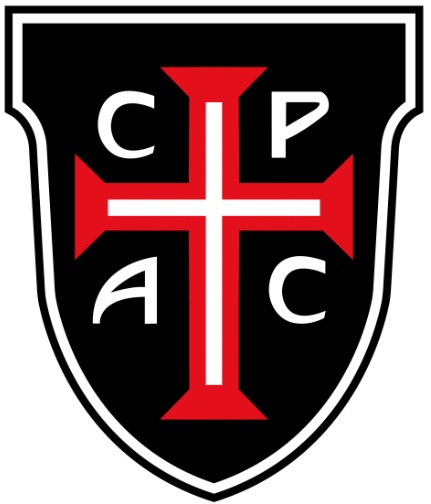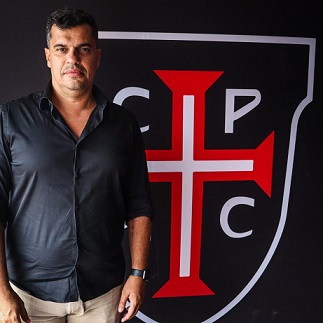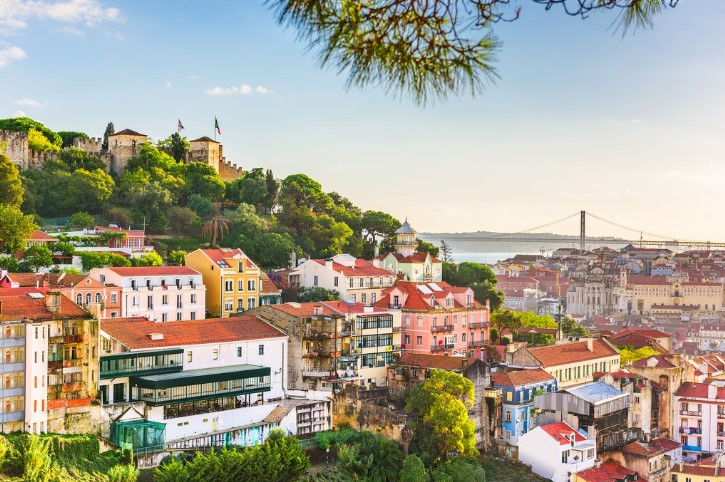 Back in Portugal’s top flight for the first time in over eight decades, Casa Pia Atlético Clube is one of the country’s most historical clubs with its own very particular story, not least owing to its association with the Casa Pia charitable orphanage that dates back to the 18th century.
Back in Portugal’s top flight for the first time in over eight decades, Casa Pia Atlético Clube is one of the country’s most historical clubs with its own very particular story, not least owing to its association with the Casa Pia charitable orphanage that dates back to the 18th century.
Filipe D’Avillez delved in detail into the club’s origins in his marvellous “One Thousand Miles to Jamor” book charting the Portuguese Cup 2018/19 competition. Here Filipe brings us a condensed history of Os Gansos (The Geese).
When Casa Pia Atlético Clube and Benfica met in August for the second game of the season, it was an historic occasion.
For one, it was Casa Pia’s first home game in the top flight of Portuguese football in 83 years. Unfortunately, the club’s charming Pina Manique stadium did not fulfil the necessary requirements, so it announced it would be playing home games at the National Stadium, in Jamor. However, an Iron Maiden concert a few days before the match left the grass in such poor state that the game was moved to Leiria instead.
Unique club
Much more significant, though, is the historic link between the two clubs. But to understand that, one first has to grasp that Casa Pia Atlético Clube is a unique case of a sports club that is linked to an institution, rather than a geographical location.
The Casa Pia, or “Pious House”, was founded in 1780 by Diogo Inácio de Pina Manique, it was dedicated to taking in orphans, or children from troubled families, and giving them an education of the highest standard available. Details have changed over the centuries, but this remains its core mission today.
As an institution it has always invested heavily in sports as an integral part of education. So, it is not surprising that when the British brought football to Portugal in the late 19th century, Casa Pia students, known as casapianos, were among the first enthusiasts.
On 22 January 1898, a team composed of casapianos made history for Portuguese football, becoming the first local team to defeat Carcavellos Club. The British players, all workers at the Underwater Cable Station in Carcavelos, near Cascais, had never lost to a Portuguese team. The Casa Pia students played for their school, as they had not formed a proper club yet.
At the origins of Benfica… and other clubs
A few years later, in 1904, Casa Pia students would form the core group of young men who founded Sport Lisboa, which would later merge with Grupo Sport Benfica to form Sport Lisboa e Benfica, the full name of the world-famous Benfica who would go on to become European champions.
 |
Casa Pia students were also involved in founding other Portuguese clubs, such as Vitória Futebol Clube (known as Vitória de Setúbal) and Lusitano de Évora, not to mention the Football Associations of Lisbon, Portalegre, and Beja. Meanwhile former student Francisco dos Santos became the first Portuguese footballer to play competitively outside of Portugal, becoming captain of Lazio, in Italy.
With so much talent to go around, it is not surprising that a group of former students eventually decided to form their own club. Hence, in June 1920, Casa Pia Atlético Clube was finally born.
One of the immediate consequences was the almost total devastation of other clubs that still relied heavily on Casa Pia talent. Benfica’s youth teams were almost emptied and only the persistence of casapianos Ribeiro dos Reis and Cosme Damião, who remained faithful to the reds, saved the club from a more serious crisis. Casa Pia AC, however, was unstoppable in its first year, winning everything there was to win, with no defeats and no losses. According to some Casa Pia fans, this would also prove to be their downfall. The success rattled the establishment and strings were pulled to make sure the club did not repeat this achievement. Conspiracy theory or fact, the truth is that things did level out eventually.
Casa Pia AC remained a competitive club until the 1940s, and although it didn’t win any big titles, it was linked to some important events. It was the first Portuguese club to play in Paris, and was invited to play Sevilla for the inauguration of their stadium, in 1921.
Azorean affiliate
It was also the first mainland team to visit the Faial Island, in the Azores, to play what is still one of the oldest teams in Portugal, Fayal Sport Club. The club made such an impact that a group of fishermen, who fully identified with the hardships faced by a team composed entirely of orphans and paupers, founded a new club on the island, Casa Pia’s only official affiliate, which was given the impressive name of Angústias Atlético Clube, or, in English, Anguishes Athletics Club, after Our Lady of Anguish, the name of the local parish.
Casa Pia was relegated in the first ever edition of the Portuguese League, in 1938/1939, but the real tragedy would come over the next few years. The Portuguese regime planned a massive exhibition in Belém to honour Portugal’s conquests and empire, which led to the expropriation of the Restelo field where the team played. Being close to the headquarters of the school was a massive advantage for the club, since the students and friends would go to games en masse, as would many locals, even if they didn’t have a formal connection to the institution.
 |
The forced move to another part of Lisbon led to a drop in support and, eventually, to relegation to the lower leagues.
Only four years ago the club was playing in the Campeonato de Portugal, the third tier of Portuguese football. In 2019 it won that league and progressed to the second tier, but performed dismally and was going to be relegated, were it not for Covid. The suspension of the tournament saved the club that season. Things went better the next year, with a 9th place, and then promotion in 2021 brought them back among the big players for this season.
Back with a bang
For now, Casa Pia AC has been performing surprisingly well. The historic match against Benfica, a club with so much shared history, was one of only two defeats at the time of writing, with the Geese, as they are known, riding high in 4th place in the standings.
Football fans who enjoy a good slice of footballing culture and history to go with their match will do well to try and catch a Casa Pia game in the top tier, although unfortunately this will not take place in their home ground for the foreseeable future.
Fact File: Casa Pia Atlético Clube
Where? The club is based in the Pina Manique stadium, in Lisbon, just off the Segunda Circular, the road which connects Benfica and Sporting’s stadiums. Home games are played in Jamor, this season, which is just a few kilometres away, and is a stunning venue. Lisbon airport is extremely close to all these sites.
How to get there: There are public busses that stop just outside the Pina Manique stadium, and it’s a 10-minute walk from the Cruz Quebrada train station to the Jamor stadium. If you are staying in Lisbon, a taxi or Uber is an easy solution.
Stadium: Estádio Pina Manique (capacity: 2,500). Home games for the league are currently being played in the National Stadium, in Jamor (capacity: 37,500)
Founded: 1920
Honours/Highest Finish: CPAC only played once in the top tier, and came last. It won several Lisbon trophies in its earlier years, including the first national trophy, the Herculano Santos Bronze, in 1920.
Nicknames: Gansos (Geese)
Curiosity: Casa Pia students were involved in the founding of Benfica and several other Portuguese clubs, but only decided to start their own club in 1920.

